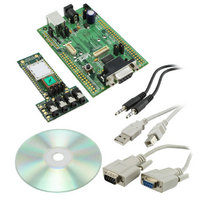DVK-BTM521 Laird Technologies, DVK-BTM521 Datasheet - Page 50

DVK-BTM521
Manufacturer Part Number
DVK-BTM521
Description
BT MM DEV KIT
Manufacturer
Laird Technologies
Type
Transceiver, Bluetoothr
Specifications of DVK-BTM521
Frequency
2.4GHz
Interface Type
RS-232
Processor Series
BTM521
Silicon Manufacturer
Laird Technologies
Kit Application Type
Communication & Networking
Application Sub Type
Bluetooth
Kit Contents
Development Board & Software Tools
Features
Supports CSR
Rohs Compliant
Yes
For Use With/related Products
BTM521
Lead Free Status / RoHS Status
Lead free / RoHS Compliant
Lead Free Status / RoHS Status
Lead free / RoHS Compliant, Lead free / RoHS Compliant
Other names
DVK-BTM521
Available stocks
Company
Part Number
Manufacturer
Quantity
Price
Company:
Part Number:
DVK-BTM521-01
Manufacturer:
LAIRD
Quantity:
7
BTM520/521
Bluetooth
AT COMMAND SET
REFERENCE
50 www.lairdtech.com
®
Multimedia Plus Module
5.4 AVRCP – Target (TG)
5.3.3 Send Remote Control Command
This section describes AT Commands an S registers when BTM5xx is configured as an AVRCP
Target (S301=2). In this mode, BTM5xx supports one subunit PANEL (see [3]).
5.4.1 Incoming AVRCP Connection Request
5.4.2 UNIT INFO Response
If <n> is greater than zero (unsuccessful outcome), <page
be sent. Examples for unsuccessful response are:
<cr,lf>AVSR 1<cr,lf> or
<cr,lf>AVSR 4<cr,lf>
*) incomplete because only the first word of the requested page is being displayed in the
AVSR asynchronous message
AT+AVC<operation_id
Send a remote control command to a connected AVRCP target. Internally, a PASS THROUGH
command is created and sent to the PANEL subunit of the AVRCP target.
<operation_id
specified in Table 3.20. Some Operation IDs can be replaced by mnemonics, see Table 3.20.
<button_state> represents “Button pushed” (=0) or “Button released” (=1) If <button_state>
is not specified, two PASS THROUGH commands, each with button_state=0 and
button_state=1, will be created and being sent consecutively.
The “OK” response is sent immediately on receipt of AT+AVC command. On command
completion, an unsolicited message will be sent to the host in the form “AVPTC <n>,
<bd_addr>, <button_state>”. AVPTC means “AVrcp Pass Through Confirmation”.
Parameter n indicates the command’s status:
‘n’=0: successful, command confirmation received from target
‘n’=1: timeout, target has not sent confirmation within the specified maximum time
‘n’=2: all other unsuccessful outcomes
Parameters:
<operation_id
<button_state> (optional) : ‘0’ - Button pushed
Response:
And:
(after command completion)
If status n indicates an unsuccessful outcome,<operation_id
An incoming AVRCP connection request is accepted automatically if a valid link key for the
paging device exists. If no link key is available, Secure Simple Pairing (SSP, BT2.1) or legacy
pairing (BT2.0 or earlier) is carried out, depending on the Bluetooth Version of the paging device.
After an AVRCP connection has been established, the module remains in AT command
mode. S Register 531 is ignored for AVRCP connections.
It is mandatory to respond to a UNIT INFO command if configured as AVRCP target.
Required response parameters are IEEE Company ID and a Unit Type.
The IEEE Company ID is a 24 bit integer which can be set via S Register 303.
The response is sent automatically with the company ID as per S303 and a fixed unit
type of 0x09 (“Panel”).
‘1’ - Button released
<cr,lf>AVPTC <n>,<operation_id
hex
hex
> is the value for the actual remote control command. Valid values are
> (mandatory): see Table 3.20
<cr,lf>OK<cr,lf> (immediately)
hex
>,<button_state>
hex
>,<button_state><cr,lf>
hex
dec
> and <button_state> are omitted.
> and <pagedata
Laird Technologies
hex
> will not



















